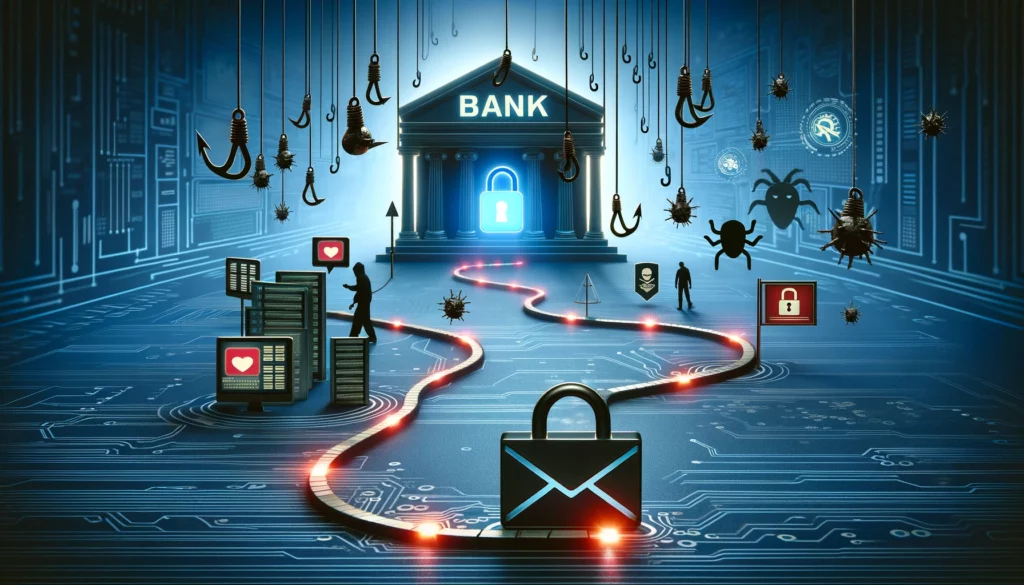In today’s fast-paced world, mobile banking has revolutionized the way we manage our finances. With the tap of a finger, we can check account balances, transfer funds, pay bills, and even deposit checks—all from the convenience of our smartphones. However, as mobile banking continues to rise in popularity, so do the risks associated with it. In this blog post, we’ll delve into the potential risks of mobile banking and provide practical precautions to help you protect your financial information and transactions.
- Risks of Mobile Banking:
- Device Theft or Loss: One of the most significant risks of mobile banking is the loss or theft of your smartphone. If your device falls into the wrong hands, unauthorized access to your banking app could lead to financial loss or identity theft.
- Malware and Phishing Attacks: Mobile devices are increasingly targeted by malware and phishing attacks designed to steal sensitive information, such as login credentials or financial data. Malicious apps, fake banking websites, and phishing emails are common tactics used by cybercriminals to trick users into divulging their personal information.
- Unsecured Wi-Fi Networks: Conducting mobile banking transactions over unsecured Wi-Fi networks, such as those in cafes or airports, poses a risk of interception by hackers. Without proper encryption, your data could be intercepted and compromised during transmission.
- Device Vulnerabilities: Like any other electronic device, smartphones are susceptible to security vulnerabilities and exploits. Outdated operating systems or unpatched software can leave your device vulnerable to cyber attacks.
- Precautions for Mobile Banking Security:
- Enable Device Lock: Protect your smartphone with a strong passcode, fingerprint, or facial recognition lock to prevent unauthorized access in case your device is lost or stolen. Set your device to automatically lock after a short period of inactivity.
- Use Official Banking Apps: Download mobile banking apps only from official app stores, such as the Apple App Store or Google Play Store. Avoid third-party app sources to reduce the risk of downloading malicious apps or counterfeit banking apps.
- Enable Two-Factor Authentication (2FA): Whenever possible, enable two-factor authentication for your mobile banking accounts. This adds an extra layer of security by requiring a second form of verification, such as a code sent to your mobile device, in addition to your password.
- Beware of Phishing Attempts: Be cautious of unsolicited emails, text messages, or phone calls requesting personal or financial information. Legitimate financial institutions will never ask you to provide sensitive information via these channels. Verify the authenticity of communications before responding or clicking on any links.
- Use Secure Wi-Fi Networks: Whenever possible, use a trusted and secure Wi-Fi network, such as your home network or a virtual private network (VPN), when conducting mobile banking transactions. Avoid using public Wi-Fi networks, as they are often unsecured and susceptible to interception by cybercriminals.
- Keep Software Updated: Regularly update your smartphone’s operating system, mobile banking apps, and security software to patch known vulnerabilities and protect against emerging threats.
- Monitor Your Accounts Regularly:
- Review Account Activity: Make it a habit to regularly review your mobile banking app for any unauthorized transactions or suspicious activity. Report any discrepancies to your bank immediately to prevent further fraud.
- Set Account Alerts: Take advantage of account alerts offered by your bank to receive notifications for account activity, such as large transactions or account logins from unfamiliar devices. This allows you to detect and respond to suspicious activity promptly.
In conclusion, while mobile banking offers unprecedented convenience, it’s essential to take proactive measures to protect your financial information and transactions from cyber threats. By following these precautions and staying informed about emerging security risks, you can enjoy the benefits of mobile banking with confidence and peace of mind. Remember, when it comes to mobile banking security, prevention is key.

Penetra Cybersecurity is at the forefront of defending the digital frontier, providing cutting-edge solutions to protect businesses and organizations from the ever-evolving threats of the cyber world. Established with a mission to create a safer internet for everyone, Penetra leverages a blend of advanced technology, expert knowledge, and proactive strategies to stay ahead of cybercriminals.
Ready to take the next step towards a more secure future? Schedule a consultation with us today and discover how we can help protect what matters most to you. Don’t wait until it’s too late—with Penetra Cybersecurity, your business isn’t just secure; it’s imPenetrable.




